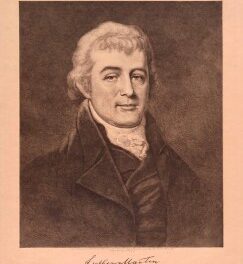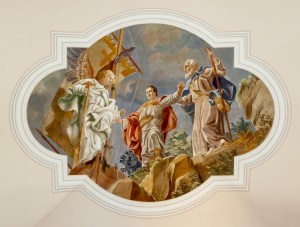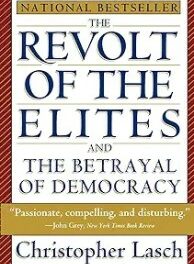We support our Publishers and Content Creators. You can view this story on their website by CLICKING HERE.
Let’s look at themes of resurrection in “The Lion, the Witch and the Wardrobe,” one of the greatest and most popular children’s stories ever written.
 Almost exactly a year ago, during last year’s Easter Octave, I wrote an essay focusing on themes of resurrection to be found in classic literature. Beginning with Tolkien’s invention of the word eucatastrophe to signify the sudden joyous turn in a story, we considered the Resurrection of Christ as the archetype and exemplar par excellence of the eucatastrophic turn in history. We then looked at themes of resurrection in literature.
Almost exactly a year ago, during last year’s Easter Octave, I wrote an essay focusing on themes of resurrection to be found in classic literature. Beginning with Tolkien’s invention of the word eucatastrophe to signify the sudden joyous turn in a story, we considered the Resurrection of Christ as the archetype and exemplar par excellence of the eucatastrophic turn in history. We then looked at themes of resurrection in literature.
Beginning with Oedipus’ assumption into heaven at the climax of the final play of Sophocles’ Three Theban Plays, or Oedipus Cycle, we then moved to themes or instances of resurrection in Christian literature, including “The Dream of the Rood” and Dante’s Divine Comedy, in three of Shakespeare’s plays (Hamlet, King Lear and The Winter’s Tale) and culminating in the final part of Eliot’s Waste Land. Twelve months on, as a way of basking in the presence of the Resurrected Lord during this year’s Easter Octave, let’s look at themes of resurrection in The Lion, the Witch and the Wardrobe, one of the greatest and most popular children’s stories ever written.
Although it is Aslan’s death and resurrection which redeems Narnia from the deathly and chilling grip of the reign of the White Witch, themes or inklings of resurrection are present even before Aslan makes his first appearance in the story.
In the midst of the bleakness of the never-ending winter that the Witch has cast upon Narnia, we are told by Mr. Beaver that it is rumoured that “Aslan is on the move”. The very mention of Aslan’s name, and the mention that he is “on the move”, makes Peter feel “suddenly brave and adventurous”. Susan feels that “some delightful strain of music” has just floated by her. And Lucy has “the feeling you have when you wake up in the morning and realize that it is the beginning of the holidays or the beginning of summer”. Aslan is, therefore, the antithesis of the Witch and the antidote to her poison. She brings a winter in which it is never Christmas; he brings summer and the beginning of the holidays. She brings the chill of death in the absence and banishment of the holy; he brings the warmth of life in the presence of the sacred.
Later, when Mr. Beaver again asserts that “Aslan is on the move”, Peter, Susan and Lucy have the same leap of the heart which seems to suggest the presence of divine grace: “once again that strange feeling – like the first signs of spring, like good news, had come over them”. This time the simile is not the warmth of summer but the resurrection of life which comes with the spring; and, more than that, the “good news” of the Gospel itself.
As for Aslan’s resurrection, it’s significance is explained by Aslan himself in profoundly brilliant theological terms. He explains “that though the Witch knew the Deep Magic, there is a magic deeper still which she did not know”:
Her knowledge goes back only to the dawn of time. But if she could have looked a little further back, into the stillness and the darkness before Time dawned, she would have read there a different incantation. She would have known that when a willing victim who has committed no treachery was killed in a traitor’s stead, the Table would crack and Death itself would start working backward.
When Aslan offers himself to the Witch as a sacrificial victim, suffering in Edmund’s place, he is drawing on a power even deeper than that of Justice. It is the power of Love, and the mercy which flows from it. This is the Deeper Magic which exists in God Himself from all eternity and which the devil does not comprehend.
Following his resurrection, Aslan descends upon the Witch’s fortress, in which her enemies had been turned into lifeless statues, breathing on them and restoring them to life, thereby reflecting Christ’s descent into Hell following his resurrection and his freeing of the souls from Limbo.
Although we might be tempted to conclude our discussion of The Lion, the Witch and the Wardrobe with the defeat of the Witch and the triumph of Aslan, we will choose instead to end with another resurrection, that of the sinner, Edmund.
Edmund’s return to life begins with the coming of spring and the return of Aslan’s power that it signifies and represents. It’s as if Edmund’s cold and frozen heart is experiencing the same thaw and the same sense of re-birth that is true of the whole of Narnia. We see it in his forlorn appeal to the Witch not to turn the young squirrel to stone. “Oh, don’t, don’t, please don’t,” he shouts. “And Edmund,” the narrator tells us, “for the first time in this story felt sorry for someone besides himself.” It is his first act of love, the first time that he had let the power of Aslan penetrate his hardened heart.
He is now ready to be reunited with his siblings and to receive Aslan’s mercy and forgiveness. Hearing that their brother had been rescued, Peter, Susan and Lucy see him walking with Aslan.
“Here is your brother,” Aslan says to the children, “and – there is no need to talk to him about what is past.” Having been absolved of his sins by the King himself, Edmund apologizes to each of his siblings in turn and receives their own assurances that all is forgiven. It is the return of the Prodigal Son, and brother, reconciled with his loved ones and washed white in the merciful love of Aslan. Because this my son was dead, and is come to life again: was lost, and is found. And they began to be merry.
In many ways, this is the unsung happy ending, the sudden joyous turn in the story, the moment of eucatastrophe. It is not the return of the king which makes our hearts leap with the joy of evangelium but the return to life of the sinner in the light and love of God.
This essay was first published here in April 2023.
The Imaginative Conservative applies the principle of appreciation to the discussion of culture and politics—we approach dialogue with magnanimity rather than with mere civility. Will you help us remain a refreshing oasis in the increasingly contentious arena of modern discourse? Please consider donating now.
The featured image is courtesy of Pixabay.
Share This Story, Choose Your Platform!
Go to Top

 Conservative
Conservative  Search
Search Trending
Trending Current News
Current News 






